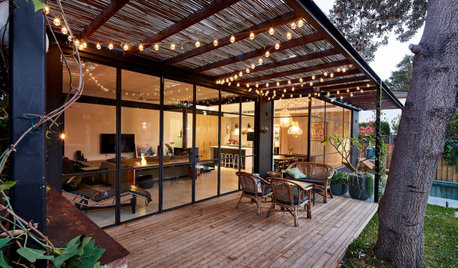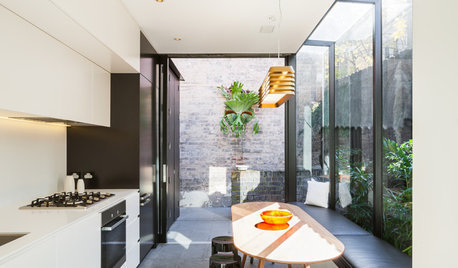Which leaves feed which tomatoes?
ffreidl
10 years ago
Related Stories

LANDSCAPE DESIGNWhich Pergola Is Right for You?
A covered pergola can increase the time you spend in your outdoor living space. Which covering should you choose?
Full Story
FURNITUREWhich Dining Table Shape Should You Choose?
Rectangular, oval, round or square: Here are ways to choose your dining table shape (or make the most of the one you already have)
Full Story
EDIBLE GARDENSSummer Crops: How to Grow Tomatoes
Plant tomato seedlings in spring for one of the best tastes of summer, fresh from your backyard
Full Story
GARDENING GUIDES15 Native Flowers That Feed Native Bees
These perennials offer superfood to hundreds of bees and are gorgeous in their own right
Full Story
FALL GARDENING5 Ways to Put Fall Leaves to Work in Your Garden
Improve your soil and yard the organic way with a valuable garden booster that grows on trees
Full Story
GARDENING GUIDES8 Native Shrubs for Year-Round Bird Feeding
It’s not just about berries. These plants provide insects for birds and seasonal interest for gardeners
Full Story
HOME TECHTo Feed and Protect: Care for Your Pet From Afar With New Devices
You might miss the nuzzles, but your dog or cat won't miss food, water or monitoring with these high-tech feeders and cameras
Full Story
GARDENING FOR BIRDSFeed the Birds: 6 Plants for Abundant Winter Berries
Be kind to your fair feathered friends during lean food times by planting a shrub or tree loaded with nutritious snacks
Full Story
DECLUTTERINGDownsizing Help: Choosing What Furniture to Leave Behind
What to take, what to buy, how to make your favorite furniture fit ... get some answers from a homeowner who scaled way down
Full Story
GARDENING GUIDESWhat's Wrong With My Plant? Leaves Often Hold the Clues
Learn how to identify common plant ailments by reading their leaves
Full StoryMore Discussions






digdirt2
seysonn
Related Professionals
Saint Louis Park Landscape Architects & Landscape Designers · Sahuarita Landscape Architects & Landscape Designers · Alexandria Landscape Contractors · Matthews Landscape Contractors · Fairfield Landscape Contractors · Framingham Landscape Contractors · Laguna Hills Landscape Contractors · Nashua Landscape Contractors · Wheat Ridge Landscape Contractors · Converse General Contractors · McPherson General Contractors · Noblesville General Contractors · Statesboro General Contractors · Woodmere General Contractors · Little Rock Decks, Patios & Outdoor Enclosuresesbo
ffreidlOriginal Author
ffreidlOriginal Author
seysonn
yukkuri_kame
seysonn
Bets
growneat
ffreidlOriginal Author
ffreidlOriginal Author
digdirt2
ffreidlOriginal Author
jimster
esbo
seysonn
fireduck
esbo
Marshallkey
joeorganictomatoes